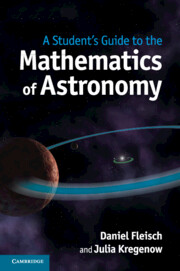1 - Fundamentals
Published online by Cambridge University Press: 05 June 2014
Summary
This chapter reviews four important mathematical concepts and techniques that will be helpful in many quantitative problems you're likely to encounter in a college-level introductory astronomy course or textbook. As with all the chapters in the book, you can read the sections within this chapter in any order, or you can skip them entirely if you're already comfortable with this material. But if you're working through one of the later chapters and you find that you're uncertain about some aspect of unit conversion, the ratio method, rate problems, or scientific notation, you can turn back to the relevant section of this chapter.
Units and unit conversions
One of the most powerful tools you can use in solving problems and in checking your solutions is to consistently include units in your calculations. As you may have noticed, among the first things that physics and astronomy professors look for when checking students' work is whether the units of the answer make sense. Students who become adept at problem-solving develop the habit of checking this for themselves.
Understanding units is important not just in science, but in everyday life as well. That's because units are all around you, giving meaning to the numbers that precede them. Telling someone “I have a dozen” is meaningless. A dozen what? Bagels? Minutes to live? Spouses? If you hope to communicate information about quantities to others, numbers alone are insufficient. Nearly every number must have units to define its meaning. So a very good habit to start building mastery is to always include the units of any number you write down.
- Type
- Chapter
- Information
- A Student's Guide to the Mathematics of Astronomy , pp. 1 - 40Publisher: Cambridge University PressPrint publication year: 2013

